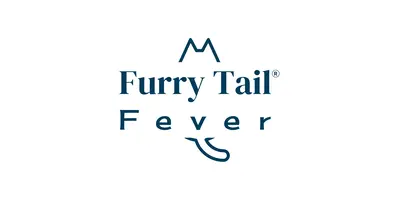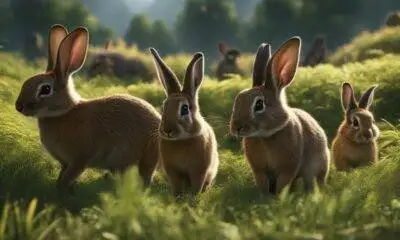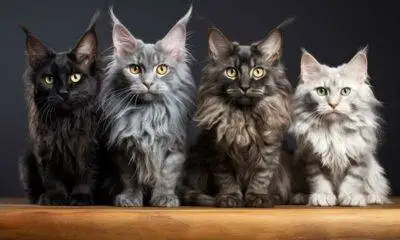cats
Why Are These Feline Conservation Tactics Successful?

Why Are These Feline Conservation Tactics Successful?
Are you skeptical about the effectiveness of feline conservation tactics? You might be wondering why these strategies have been successful in protecting these majestic creatures.
Well, let’s explore the reasons behind their triumphs. By understanding the importance of their habitat, implementing measures to prevent poaching, involving local communities, advancing captive breeding programs, and preserving genetic diversity, these tactics have proven effective in safeguarding feline populations.
This introduction will examine the key factors contributing to their success, highlighting the significance of these conservation efforts. So, let’s dig in and uncover why these feline conservation tactics are truly making a difference in securing the future of these magnificent creatures.
Key Takeaways
The success of feline conservation tactics can be attributed to various factors. One of the key reasons for their effectiveness is the understanding and preservation of natural habitats. By recognizing the importance of these habitats and taking steps to protect them, conservation efforts have been able to create safe spaces for feline species to thrive.
Additionally, anti-poaching initiatives have played a crucial role in the success of feline conservation. By implementing measures to combat illegal hunting and trade, conservationists have been able to reduce the threat to these species and ensure their survival.
Another important aspect is the involvement of local communities. By engaging with and educating people living near feline habitats, conservation efforts have gained support and cooperation, leading to more effective protection measures.

Advancements in captive breeding programs have also contributed to the success of feline conservation. By carefully managing breeding programs and reintroducing captive-bred individuals into the wild, conservationists have been able to boost population numbers and enhance genetic diversity.
Overall, these strategies have proven to be effective in safeguarding feline species worldwide. By prioritizing habitat preservation, implementing anti-poaching measures, involving local communities, and advancing captive breeding programs, conservation efforts have made significant progress in ensuring the survival and protection of feline species.
Understanding Habitat Significance
Understanding the Importance of Habitat
To truly grasp the significance of habitat, we need to go beyond its physical characteristics and consider its crucial role in supporting feline conservation efforts.
Habitat is more than just a space; it’s a complex ecosystem that provides essential resources for the survival and well-being of feline species.
Preserving ecosystems is vital for feline conservation because it ensures the existence of a healthy and balanced habitat.
By conserving habitat, we not only protect feline species but also safeguard the countless other organisms that depend on these ecosystems.
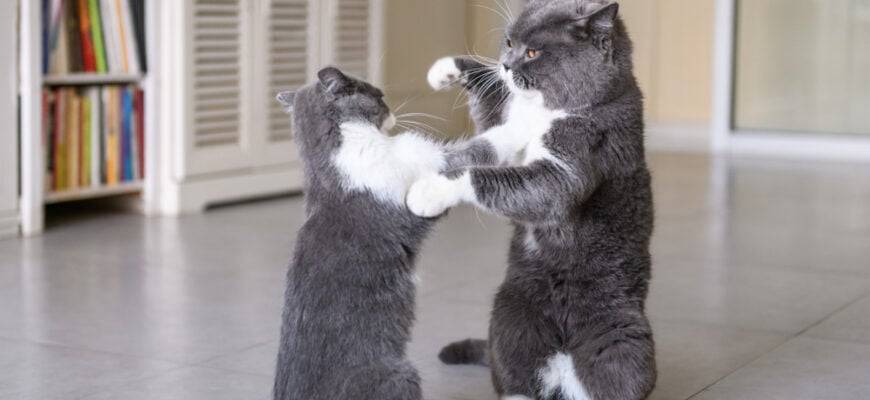
Recognizing the importance of habitat in supporting feline conservation efforts is key to implementing effective strategies and initiatives for the protection and preservation of these magnificent creatures.
Implementing Anti-Poaching Initiatives
Implementing Effective Strategies to Combat Poaching and Protect Endangered Feline Species
To ensure the success of feline conservation tactics, it’s crucial to implement effective anti-poaching initiatives. By taking the following strategies into account, we can make significant progress in combating poaching and safeguarding these vulnerable species.
- Establishing Wildlife Sanctuaries: Building protected areas specifically designed for feline conservation provides a safe haven for these animals. These sanctuaries offer suitable habitats and controlled environments that minimize the risk of poaching.
- Training Local Rangers: Equipping local rangers with the necessary skills and knowledge is essential for effective anti-poaching efforts. By providing comprehensive training programs, we can educate rangers on identifying poaching activities, tracking poachers, and enforcing wildlife protection laws.
- Implementing Surveillance Technology: Utilizing advanced technologies like drones, camera traps, and GPS tracking systems can greatly enhance monitoring and detection of poaching activities. Real-time data and evidence collected through these methods can aid law enforcement actions.
- Collaborating with Local Communities: Engaging with nearby communities and raising awareness about the importance of feline conservation is vital. By involving locals in conservation efforts, we can foster a sense of ownership and responsibility, leading to a greater understanding and support for anti-poaching initiatives.
By implementing these anti-poaching measures, we can ensure the long-term survival of feline species.
Now, let’s delve into the next aspect of successful feline conservation: fostering community involvement.
Fostering Community Involvement
Engaging local communities is crucial for successful feline conservation efforts. By involving community members, we can tap into their knowledge, resources, and passion for conservation. Encouraging volunteers to participate in activities like habitat restoration, monitoring, and education programs can have a significant impact. Not only does this increase the number of people working towards feline conservation, but it also raises awareness and educates the public about the importance of protecting these species.
In addition to volunteer engagement, community partnerships play a vital role. Collaborating with local organizations, businesses, and government agencies allows us to leverage each other’s strengths and pool resources. This collaborative approach creates a more comprehensive and effective strategy for feline conservation. Together, we can work towards the long-term preservation of these feline species.
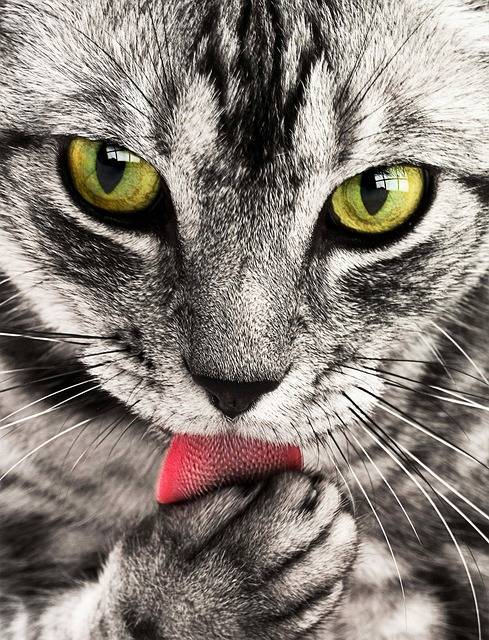
Advancing Captive Breeding Programs
Advancing Captive Breeding Programs for Feline Conservation
You can actively contribute to feline conservation efforts by participating in and supporting the advancement of captive breeding programs. These programs play an important role in preserving endangered feline species and increasing their population numbers. Here are four reasons why advancing captive breeding programs is essential:
- Genetic Management: Captive breeding programs allow experts to carefully manage the genetic diversity of feline populations. By strategically selecting mates, they can minimize the risk of inbreeding and maintain healthy and robust populations.
- Success Metrics: These programs track success through various metrics, such as the number of successful breeding pairs, the number of offspring produced, and the reintroduction of captive-bred individuals into the wild. These metrics help evaluate the effectiveness of captive breeding efforts and guide future conservation strategies.
- Species Preservation: Captive breeding programs provide a safety net for endangered feline species that are threatened by habitat loss and poaching. By breeding these animals in captivity, we can ensure their survival and potentially reintroduce them into their natural habitats.
- Public Education: These programs offer an opportunity for public engagement and education. By visiting captive breeding facilities, individuals can learn about feline conservation, the challenges these animals face, and how they can contribute to their protection.
Supporting and participating in captive breeding programs is a concrete way to make a positive impact on feline conservation and contribute to the long-term survival of these magnificent creatures. As conservationist Jane Goodall once said, ‘The least I can do is speak out for those who can’t speak for themselves.’
Preserving Genetic Variability
Preserving Genetic Variability
To ensure the long-term success of feline conservation efforts, it’s crucial to consistently prioritize the preservation of genetic variability. Genetic research plays a vital role in understanding the genetic makeup of feline populations and identifying individuals with unique genetic traits. By conducting genetic research, conservationists can determine the genetic diversity within a population and develop strategies to preserve it.
Conservation breeding is another effective tactic in preserving genetic variability. By selectively breeding individuals with diverse genetic backgrounds, conservationists can prevent inbreeding and maintain a healthy gene pool. This helps mitigate the risks associated with reduced genetic diversity, such as susceptibility to diseases and reduced adaptability to changing environments.
Frequently Asked Questions
How Do Feline Conservation Tactics Differ From Other Types of Conservation Efforts?
Feline conservation tactics differ from other conservation efforts because they specifically focus on protecting and preserving cat species. These tactics are designed to address the unique challenges faced by endangered cats by tailoring strategies to their behavior and habitats. By implementing these specialized approaches, we can effectively safeguard these remarkable animals.

What Are the Main Challenges Faced in Implementing Anti-Poaching Initiatives for Feline Conservation?
Implementing anti-poaching initiatives for feline conservation can be a challenging task. One of the main obstacles is the limited availability of resources, which makes it difficult to effectively combat poaching activities. Additionally, the vast territories that need to be covered pose a significant challenge, as it requires extensive manpower and logistical support. Moreover, the constant threat of poachers adds to the complexity of the situation.
However, with determination and strategic planning, these challenges can be overcome. It is crucial to allocate resources efficiently and prioritize the areas with the highest poaching risk. Collaborating with local communities and raising awareness about the importance of feline conservation can also play a vital role in deterring poaching activities. By working together and implementing comprehensive anti-poaching strategies, we can protect these magnificent animals and ensure their survival for future generations.
How Does Fostering Community Involvement Contribute to the Success of Feline Conservation Tactics?
Community involvement and public awareness play a vital role in the success of feline conservation tactics. Engaging the community, fostering a sense of responsibility, and increasing awareness are key to garnering support and resources for effective implementation. When communities are actively involved, they become invested in the cause and take ownership of conservation efforts, leading to better outcomes for feline populations. By raising awareness about the importance of feline conservation, we can inspire individuals to contribute their time, resources, and expertise towards protecting these magnificent creatures. Together, we can make a significant difference in preserving the future of feline species.
What Are the Key Factors Considered in Advancing Captive Breeding Programs for Feline Conservation?
Advancing captive breeding programs for feline conservation involves considering their benefits, such as increasing population numbers and preserving genetic diversity. These factors play a crucial role in the successful conservation of feline species. By carefully managing captive breeding programs, we can help ensure the survival of these magnificent animals for future generations.
Why Is Preserving Genetic Variability Crucial for the Long-Term Success of Feline Conservation Efforts?
Preserving genetic diversity is vital for the long-term success of feline conservation efforts. It plays a crucial role in maintaining a varied gene pool, which enables species to adapt to changing environments and reduces the risk of genetic diseases. By preserving genetic variability, we ensure the survival and resilience of feline populations in the face of environmental challenges. This is essential for the continued existence and well-being of these magnificent creatures.
Conclusion
The success of feline conservation tactics can be attributed to various factors.
Understanding the importance of habitats, implementing anti-poaching initiatives, involving local communities, advancing captive breeding programs, and preserving genetic diversity have all played a significant role in the conservation efforts.

These strategies have proven effective in ensuring the survival and protection of feline species worldwide.
table, th, td { border: 1px solid black; border-collapse: collapse; padding: 10px;}
cats
Little Kitten My Favorite Cat – Play Fun Pet Care Kids Game – Fun Games For Kids & Children

By: ArcadeGaming
Title: Little Kitten My Favorite Cat – Play Fun Pet Care Kids Game – Fun Games For Kids & Children
Sourced From: www.youtube.com/watch?v=Hyju6Gwo_gs
cats
Guy Thinks He’s Lost His Foster Cat | The Dodo

By: The Dodo
Title: Guy Thinks He”s Lost His Foster Cat | The Dodo
Sourced From: www.youtube.com/watch?v=Jn4YJr_pWzY
cats
How To Train Your Cat: Two Methods You Need To Know

By: Cat School Clicker Training
Title: How To Train Your Cat: Two Methods You Need To Know
Sourced From: www.youtube.com/watch?v=LJVQINS8xFk
-

 cats7 months ago
cats7 months agoHow to Get Your Cats to Stop… Everything You Hate: Every No Needs a Yes!
-

 All Animals1 year ago
All Animals1 year agoALL about Lagomorphs Explained!
-

 All Animals10 months ago
All Animals10 months agoExplore the Wilderness: ALL about Carnivores Unleashed!
-

 Animals1 year ago
Animals1 year agoThe Wonders: ALL About Artiodactyls
-

 Cat Breeds6 months ago
Cat Breeds6 months agoWhat Are Some Rare Domestic Cat Breeds?
-

 Cat Breeds6 months ago
Cat Breeds6 months agoWhat Are the Top Family-Friendly Domestic Cat Breeds?
-

 Cat Breeds6 months ago
Cat Breeds6 months agoDiscover Rare Domestic Cat Breeds With Our Guide
-

 Cat Breeds6 months ago
Cat Breeds6 months agoTop Family-Friendly Domestic Cat Breeds
